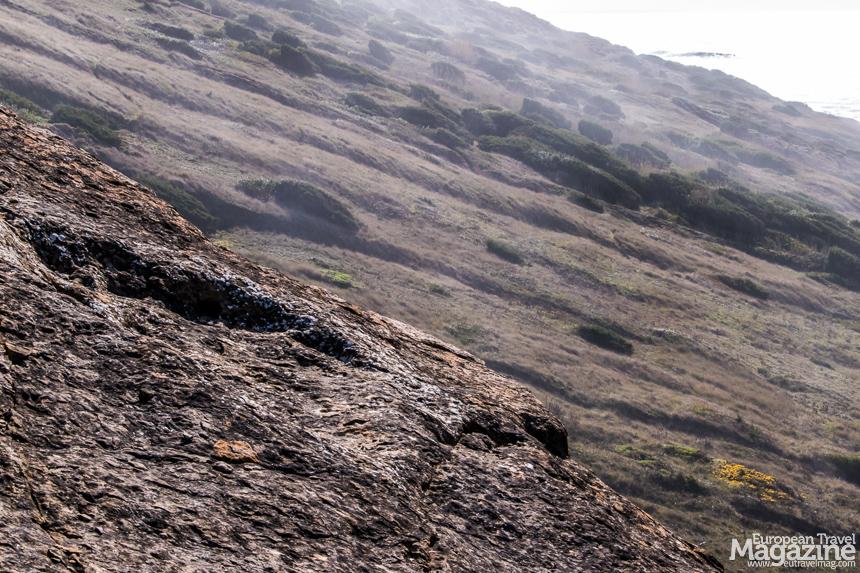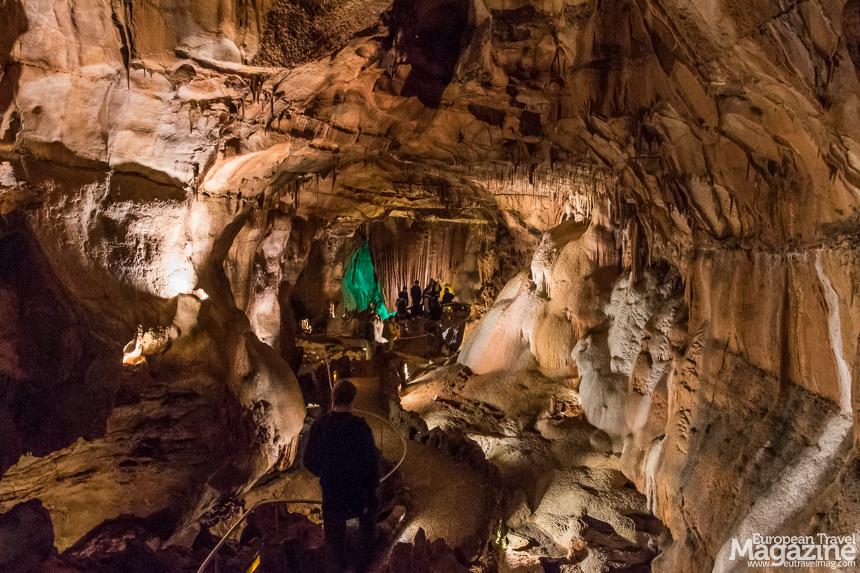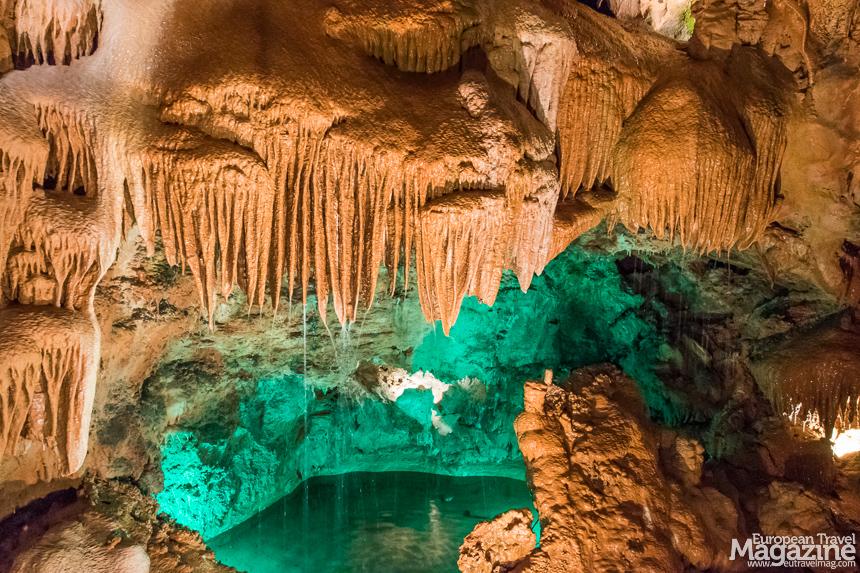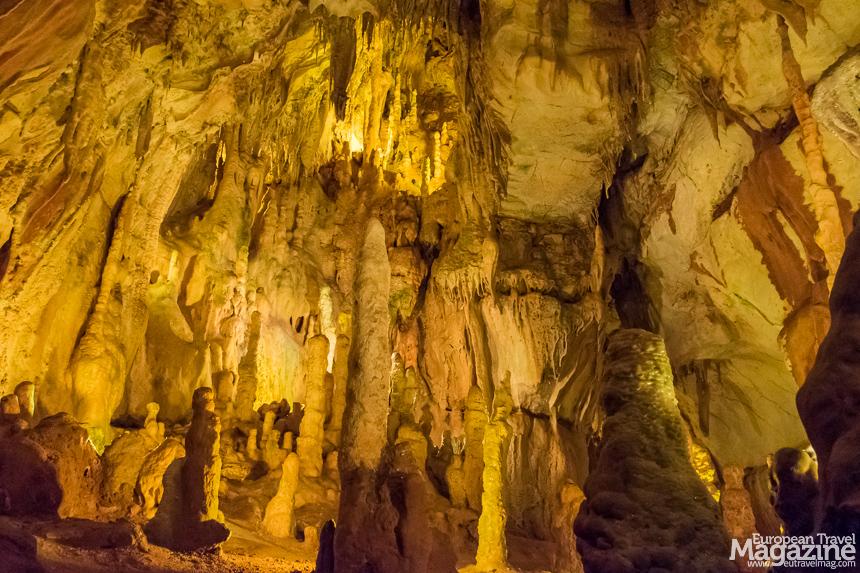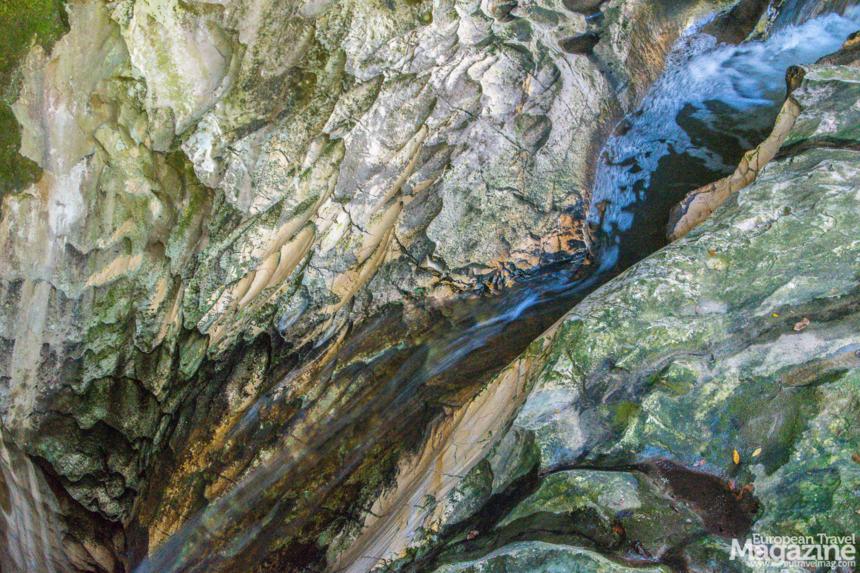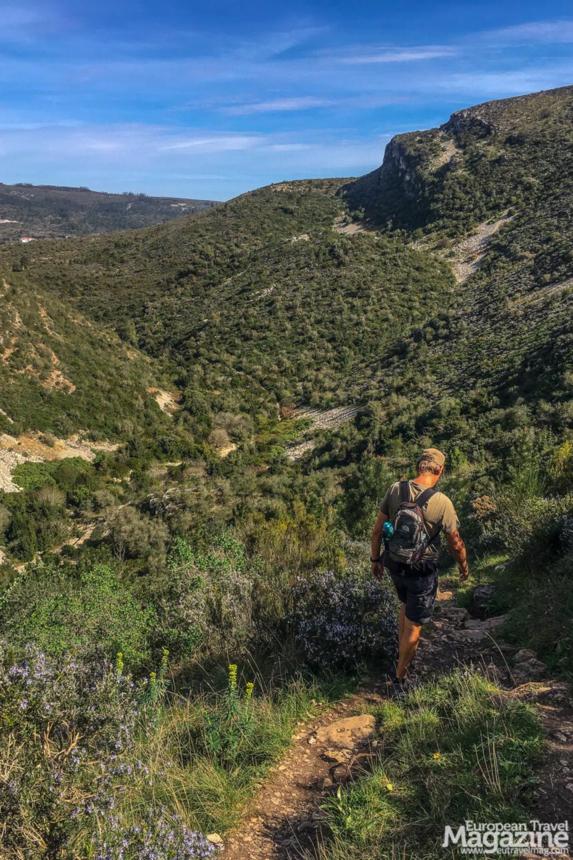The Silver Coast of Portugal is not only a haven for surfers and sunseekers. If you venture just a little further inland, you can encounter million-year-old dinosaur footsteps, psychedelic caves and unique geological phenomenas in the Nature Park of Serras de Aire and Candeeiros. Here, in this green patch between Porto and Lisbon, you can go back in time, discover a REAL Jurassic Park and follow in the Footsteps of the Dinosaurs.
From mighty mountains to birthplace of rivers deep inside a cave system, the Parque Natural das Serras de Aire e Candeeiros has it all. Add to that the close vicinity to Portugal’s Silver Coast with surfer-paradise Nazaré and family-friendly Sao Martinho do Porto, not less than three World Heritage listed monasteries in close proximity, and Knights Templar castles dotted around the region, this region is every traveller’s dream.
Only an hour’s drive from Lisbon you can enter into a Karst Kingdom, where water and time has shaped the landscape like no place other. After spending a month in region, here’s our guide to the best places in the Nature Park to discover a Jurassic World:
Dinosaur footprints
175 million years ago (give or take), a group of dinosaurs crossed some Jurassic mud. The sauropods were quadruped herbivorous dinosaurs with small heads and long necks and tails. And feet like elephants.
The footprints they left behind were fossilised and covered by other layers of mud, transforming into limestone, that is quarried extensively here, in the Parque Natural da Serras de Aire e Candeeiros in the Centro region of Portugal
And now, 175 million years later, as the quarry digs into the rock, it uncovers these ancient footprints of animals that walked the earth long before we did. Luckily for us – and for posterity – the quarries were closed and the tracks protected. You can now walk on boardwalks over these sites and have a closer look at the prints. Fascinating!!
You can discover the footprints for yourself at the Monumento Natural das Pegadas de Dinossáurios (where there’s a small entry fee and a museum. Great place to learn more!), at Pegadas Vale de Meios (free) or out in the open nature (like here).
- Monumento Natural das Pegadas de Dinossáurios
- Serras de Aire e Candeeiros Nature Park website
- Portugal in Stone website (Great site for geology buffs! In Portuguese, but Google Translate will do the trick)
Into the Jurassic caves
As you get down to 125 metres below the surface, your guide will tell you how the cave continues for at least 11 kilometres. At that point you’ve only walked about 600 metres.
The Grutas de Mira de Aire were discovered in 1947 and for every expedition (now mostly using scuba gear as most of the cave is under water) they discover more. Their formation goes back 150 million years to the Middle Jurassic age, when the dinosaurs populated this region. The caves are lit with coloured lights that emphasise the beauty of the shapes of the stalagmites and stalactites.
During the tour you can admire the strange limestone shapes, formed over millions of years, such as the “Jellyfish”, the “Spaghettis” and the magnificent “Organ”. Mira de Aire’s caves is one of Portugal’s 7 Maravilhas Naturais, or Natural Wonders, and it’s truly wondrous!
Another great cave, and one of the most accessible is Grutas da Moeda. This is a great outing, especially for families with kids, or if you’re somewhat challenged in the walking department. It is a more informative and educational cave visit than Grutas de Mira de Aire, and you can really learn a lot about the geology and natural history of the region here. The guides at the cave do a great job at communicating the fun & facts of geology, information about the wildlife in the caves and give you a great insight to the topography of the Serras de Aire e Candeeiros Nature Park.
Grutas da Moeda may be smaller than other caves in the area, but what it lacks in size it makes up in info, fun & friendliness! Definitely worth a visit for families!
Hiking the geological highlights
It’s no secret that we love to hike, and think that it’s the best way to connect with the singularity of a region and its landscape.
So we’ve selected 3 great hikes for you that’ll take you past some of the most unique geological phenomena in the nature park. The first will take you to the birth of a river, the next takes you into caves and in close contact with the geographic peculiarities of the karst landscape, and on the last you encounter waterfalls, a natural amphitheatre and some of the best views in the National Park.
PR1 ACN – Olhos d’Agua de Alviela – 2km
Although this trail is quite short, it remains one of our favourite trails in this region. The PR1 ACN is a “there-and back” trail, but we recommend that you park your car at the riverside and take a walk around the area before venturing into the canyon and discovering its source.
The PR1 ACN route of Olhos d´Água do Alviela runs from the source of the Alviela river to the sinkhole of the Amiais stream. This forms geological structures of rare beauty as it crosses the Middle Jurassic limestone. Its geological beauty, surrounded by Mediterranean vegetation, makes this route one of the most attractive in the region.
The Amiais stream originates from the rain that falls onto and infiltrates the plateau of Santo António and is carried to this place by a complex network of underground galleries that constitute hundreds of caves. You can observe the Amiais stream in front of the cave Lapa da Canada, before it plunges into the depths of the cave, around 200 meters below.
You can’t follow the Amiais where it flows into the cave, but you can go back on the trail to see where the stream reemerges, and creates an imposing river canyon and becomes the Alviela River.
Aother fun fact: The Alviela River used to supply water to Lisbon since 1880 via the largest gravity aqueduct in Portugal. 114 kilometers long and having gravity as the only driving force. You can take a closer look at the aquaduct on the 8 km hiking route PR8 ACN that also starts where you parked your car.
PR2 BTL – Buraco do Roto Route – 6km
This 6 km circular route is one of the most beautiful hikes in Parque Natural das Serras de Aire e Candeeiros (PNSAC).
It takes you into ancient burial caves, through a natural tunnel and round to Malhadouro valley, where you’ll climb some natural stairs that will lead you to Pia da Ovelha, a large natural cave, which owes its name to the sink built there under a stalactite and which drips abundantly in the rainy season, serving as a water hole for the sheep (ovelhas) in the old days.
Via roped stairs you get to the bottom of the valley, from where you can watch the climbers on Reguengo do Fetal Climbing area on a good day.
You’ll then ascend the other side of the valley, up to the fertile plain before descending Vale da Pena. Here, you’ll get the chance to observe the rock formations again on your way back, before reaching your point of departure in Reguengo do Fetal.
PR4 PMS – Fornea Route – 12km
This 12 km circular route is one of the most beautiful hikes in Parque Natural das Serras de Aire e Candeeiros (PNSAC). When you leave Alcaria and enter into the natural amphitheatre, you’ll soon start to notice how all sounds, other than natural ones, fade away. No wonder this place is called “Fornea” which means “oven”.
Walking into the valley you will discover waterfalls (if in season) and caves. The trail then doubles back and takes you up on top of nature’s wild arena (look out for fossils on your way!) with glorious views of the National Park before descending back into the valley.
On the trail you may see birds of prey, wild flowers and paleolithic remains (fossil) from the Jurassic era.
PS: While the route’s name used to be called “PR6 PMS” it is now named “PR4 PMS” and you can follow the signposts along the route. Remember to follow PR4.1 PMS to get into the natural amphitheatre, past waterfalls and into the caves.
More info:
- Serras de Aire e Candeeiros Nature Park on VisitPortugal’s website
- Serras de Aire e Candeeiros Nature Park on Natural.pt’s website
- Serras de Aire e Candeeiros Nature Park website (in Portuguese)
Discover more









